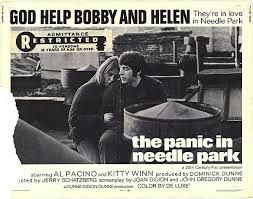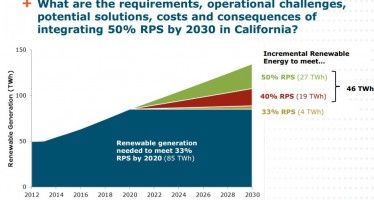Prop. 47’s drug-law reforms inject controversy
 California’s decision to reduce sentences for some drug and property crimes has been heralded as a much needed reform of the criminal justice system. While it’s too soon to know what effect the measure is having on crime, critics charge it could jeopardize progress in the state’s drug courts and a widespread drop in property crimes.
California’s decision to reduce sentences for some drug and property crimes has been heralded as a much needed reform of the criminal justice system. While it’s too soon to know what effect the measure is having on crime, critics charge it could jeopardize progress in the state’s drug courts and a widespread drop in property crimes.
Last November, voters approved Proposition 47 by a 20 percentage-point margin. The measure reclassified half a dozen drug and property crimes from felonies to misdemeanors. It also removed some degree of prosecutorial discretion for “wobbler” crimes, those that can either be charged as a felony or misdemeanor.
“We must devote our resources to keeping violent criminals off the streets, not cycling addicts in and out of jail,” San Francisco District Attorney George Gascon posted on Facebook following Prop. 47’s victory. “Nobody wins when we incarcerate someone at a cost of thousands to taxpayers, just for them to be released some time later and reoffend.”
If nobody won under the old system, critics say addicts could very well lose under the new law if it ends up undermining the state’s programs for treating substance abuse.
Prop 47: Prioritize violent, serious crimes
Proponents of the measure argued it was a necessary criminal justice reform to save money and reduce the state’s prison population.
“Proposition 47 invests in solutions supported by the best criminal justice science, which will increase safety and make better use of taxpayer dollars,” the measure’s proponents argued in their ballot statement. “Proposition 47 is sensible. It focuses law enforcement dollars on violent and serious crime while providing new funding for education and crime prevention programs that will make us all safer.”
In 2013, 1,212,801 people were arrested in California, according to the FBI’s Uniform Crime Reporting Program. Drug-related violations accounted for 217,520 arrests, the largest category. Property crimes resulted in 139,624 arrests and ranked third after driving under the influence.
According to a report by the Center on Juvenile and Criminal Justice, 188,790 Californians faced felony charges for the six offenses reclassified under Prop. 47. The non-partisan Legislative Analyst’s Office estimated that roughly 40,000 offenders every year would be affected by the change in state law.
The substantial number of cases affected by the measure bolsters proponents’ argument that the measure will bring about major cost savings to the state.
Drug courts lose powerful threat
In recent years, California’s drug courts have been one of the most effective programs for addressing drug addiction. These programs are targeted at low-level drug offenses and provide substance abuse treatment instead of prison time.
“But at the heart of the program,” the Los Angeles Times recently noted, “is the threat of a felony sentence if participants flunk out.”
Prop. 47 effectively eliminated that threat by reducing the punishment for some drug crimes. In some counties, as much as “70% of the drug court population were charged with crimes listed in Proposition 47.” Instead of getting help to tackle their addiction at an early stage, drug addicts are able to take the misdemeanor slap on the wrist.
“It’s a disorder of now, it’s a disorder of compulsions,” Dr. Doug Marlowe, the chief of science, policy and law for the National Association of Drug Court Professionals, told the Times. “Without some substantial stick and carrot, the outcomes are quite poor.”
That’s already come to pass in San Diego County, where one judge has seen defendants take their misdemeanor charge instead of opting for treatment through drug court.
“They said, ‘Nope,'” said San Diego Judge Peter Gallagher, according to the Associated Press. “They’ll go back and take misdemeanor punishment.”
2014: Drop in property crimes
In addition to undermining the state’s drug courts, critics worry Prop. 47 could halt the state’s drop in property crimes. According to the Public Policy Institute of California, the state’s property crime rate, despite an uptick in 2013, is near historic lows. “The 2013 property crime rate of 2,665 per 100,000 residents is down 3.9% from 2012 and close to the 50-year low of 2,594 reached in 2011,” PPIC observed in its report, “Crime Trends in California.”
That progress continued into 2014. The FBI recently released its preliminary crime statistics for the first six months of 2014. The first half of 2014 is an important statistical milestone in property crime because it’s the last period of data prior to when Prop. 47 took effect.
In all five of the state’s largest cities — from San Diego to San Francisco — there was a drop in the number of property crime offenses reported to law enforcement. Here are the number of property crimes in the state’s five largest cities, ranked by population:
- Los Angeles: down from 41,993 to 39,916, a decrease of 4.9 percent;
- San Diego: down from 15,767 to 13,759, a decrease of 12.7 percent;
- San Jose: down from 13,482 to 12,053, a decrease of 10.6 percent;
- San Francisco: down from 22,181 to 21,330, a decrease of 3.8 percent;
- Fresno: down from 11,295 to 10,517, a decrease of 6.9 percent.
As property crimes declined, violent crime rates in the five largest cities have remained flat, with the exception of Los Angeles. The LAPD recently announced that violent crime increased 14.3 percent in 2014.
The numbers that come in for 2015 will be key to how Prop. 47’s reforms are interpreted.
Related Articles
Reaching 50 percent renewable goal won’t be easy
Yesterday Democratic leaders in the California Senate introduced a series of bills to move the state to a goal of 50 percent renewable
Pro Tem Cup: CA Senate Dems cancel event, keep cash
In light of recent criminal cases involving three of their members, Senate Democrats have canceled a large annual fundraising event
LA to shift sidewalk burden
JULY 6, 2010 By TORI RICHARDS As the infrastructure crumbles throughout California, the sidewalks laid down during the first half




